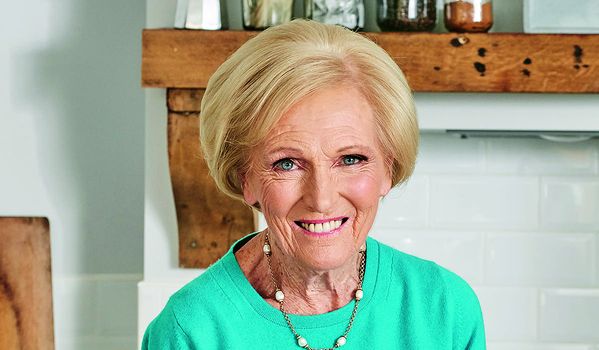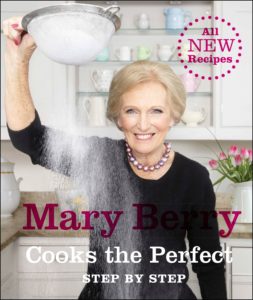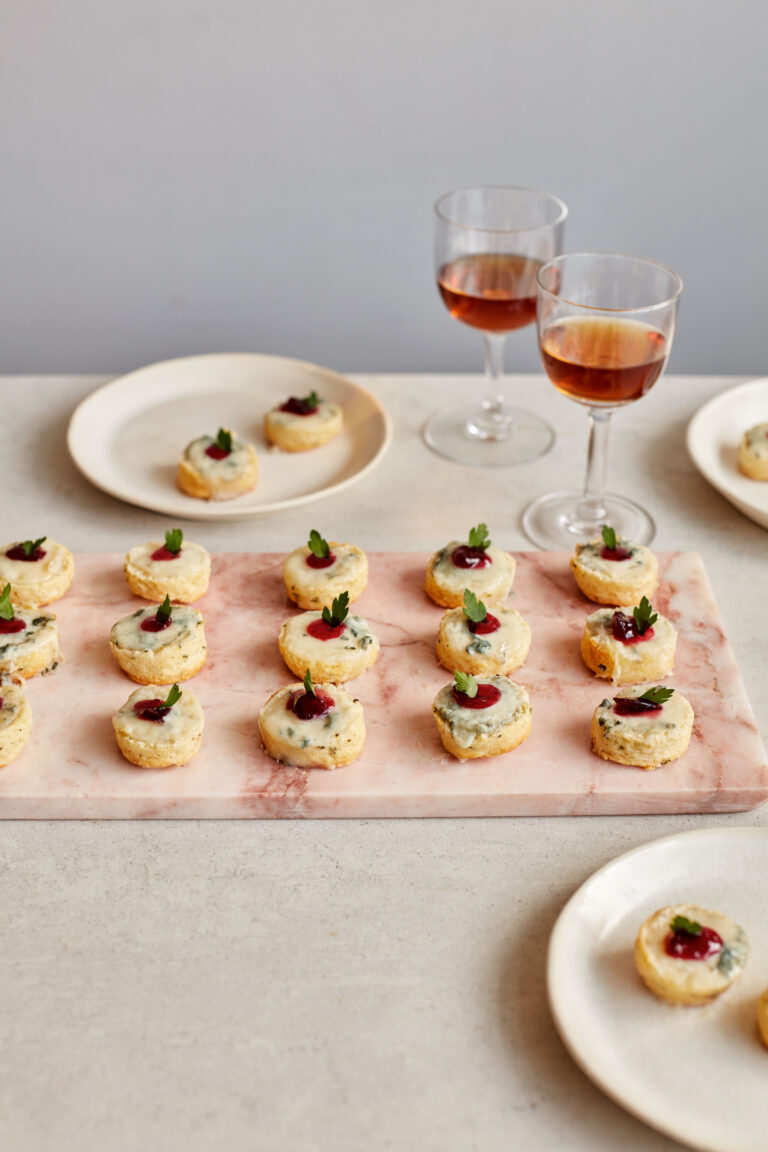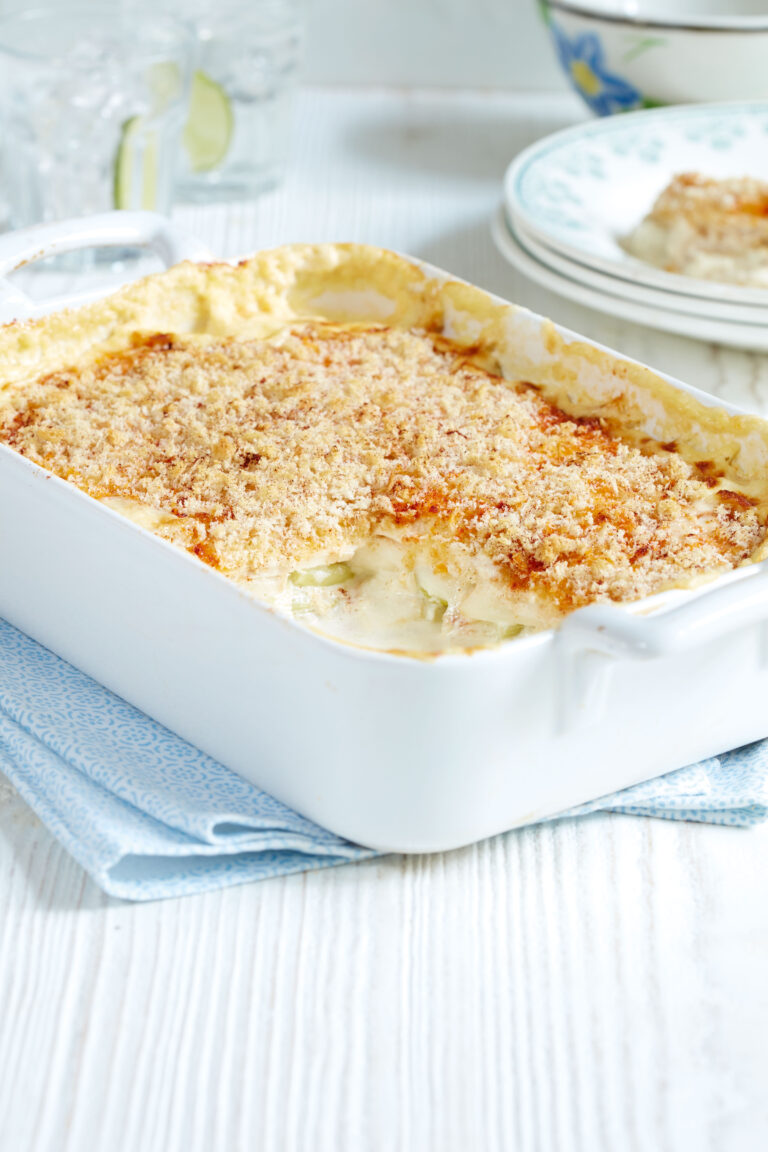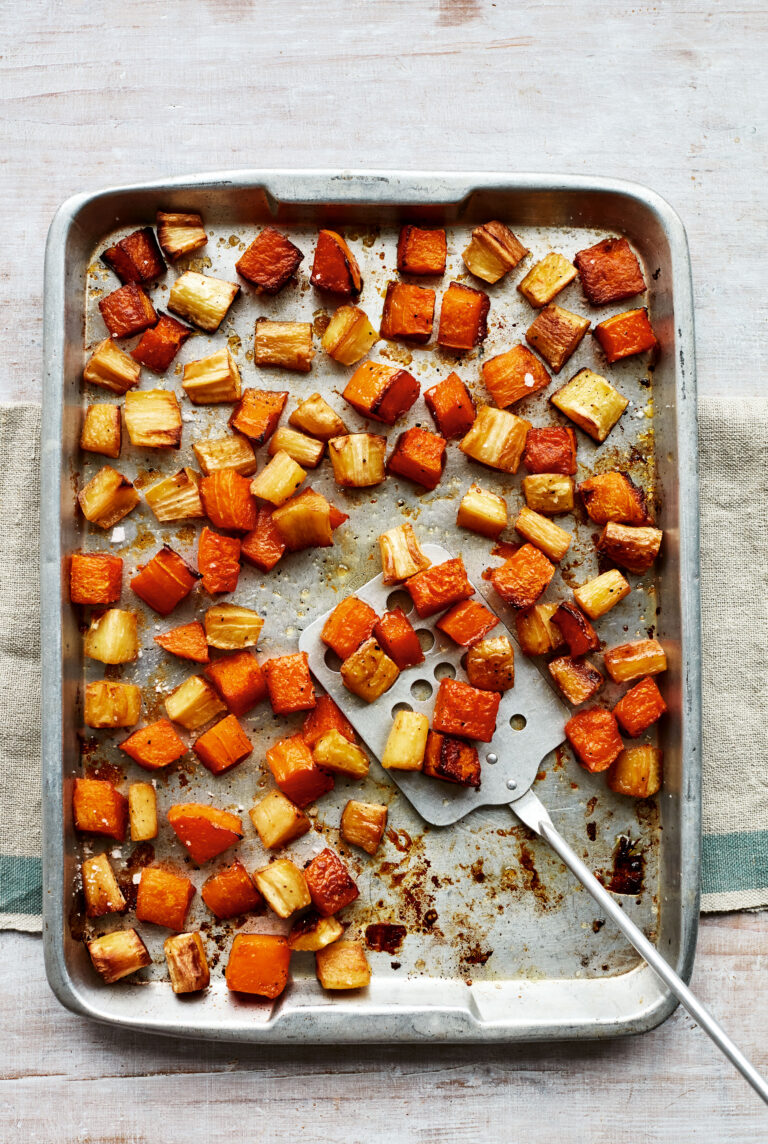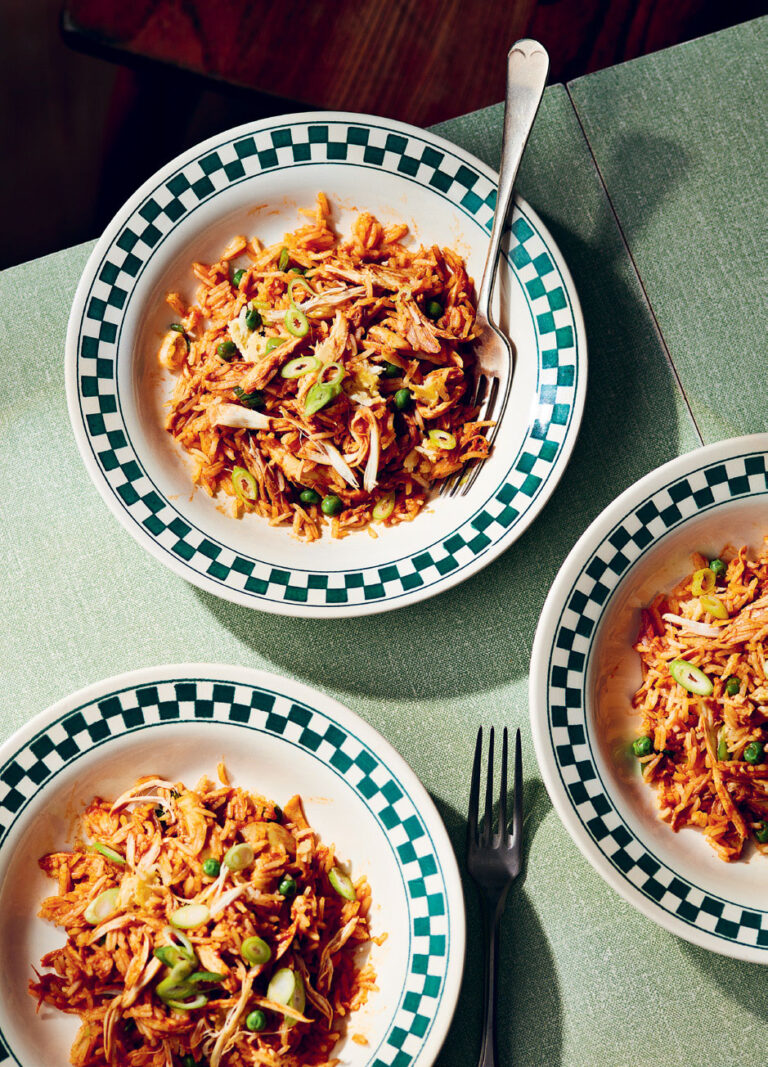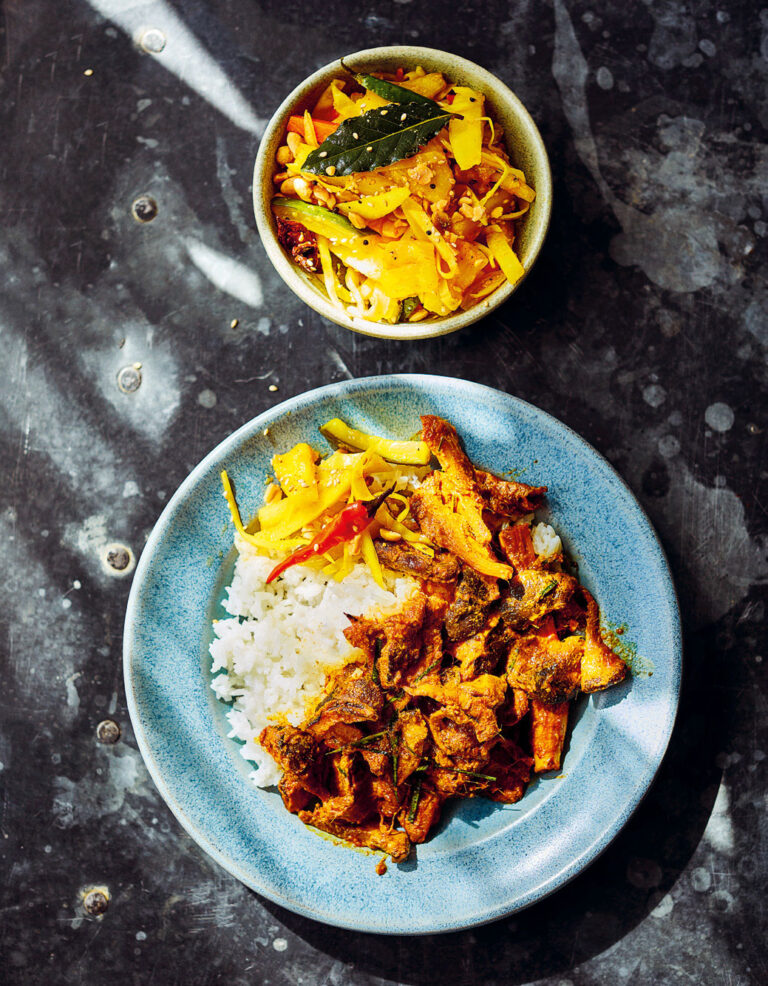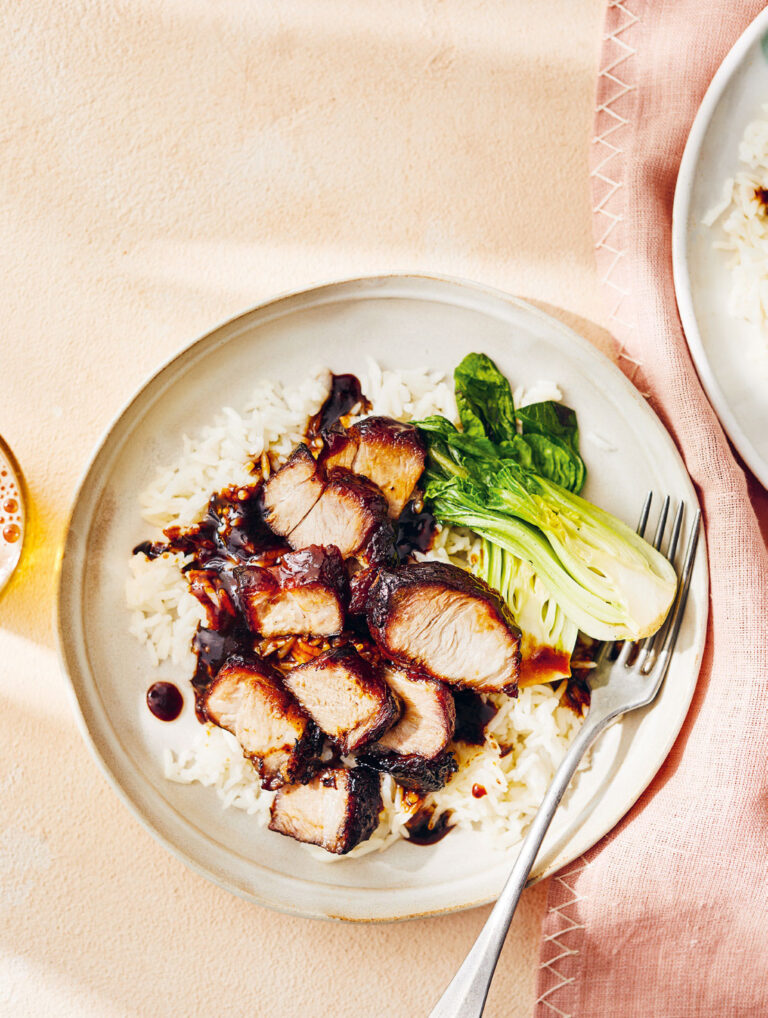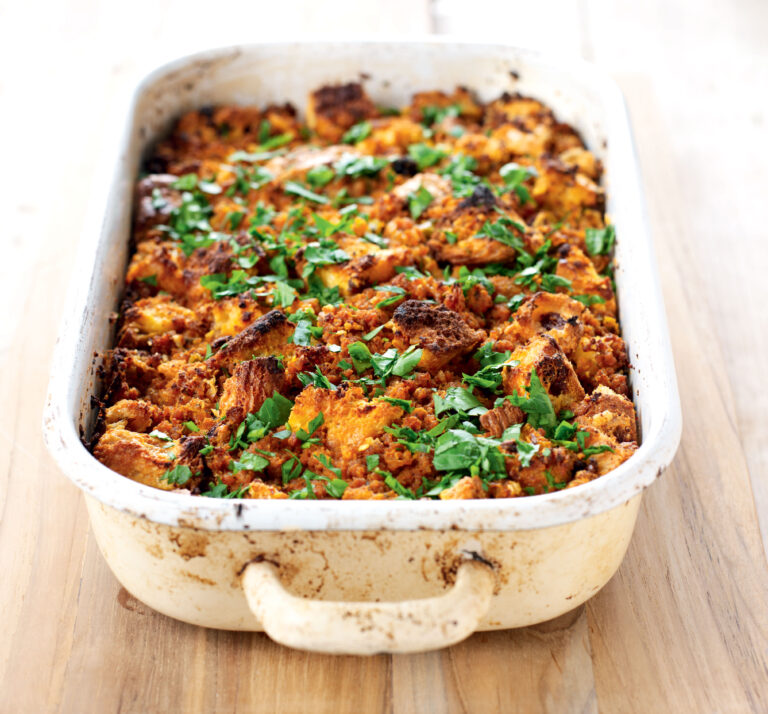Roast Chicken with Tarragon Butter
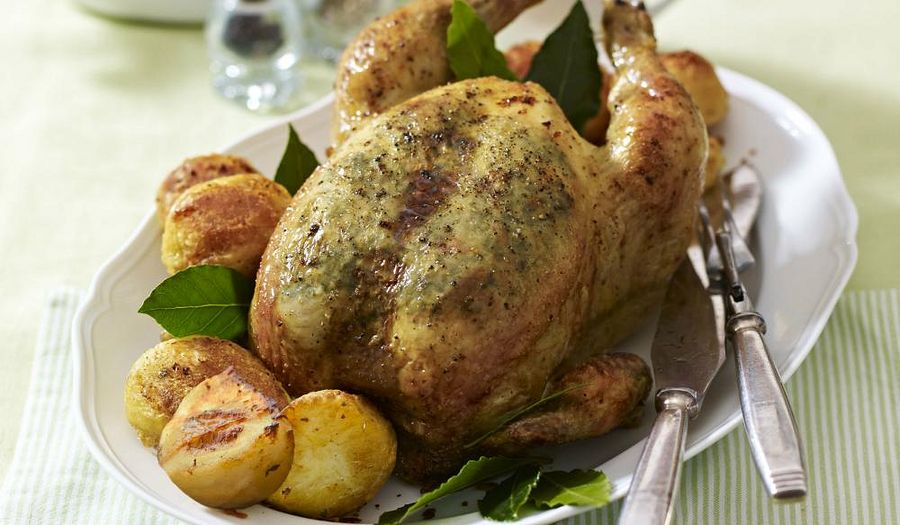
Make Mary Berry's Roast Chicken with Tarragon Butter at home with her master step-by-step recipe from her latest cookbook, Cooks The Perfect.
Introduction
I do like this way of roasting a chicken: spreading herb butter under the skin makes the meat extra moist and flavourful. While the roasted bird rests, turn up the oven for really crisp potatoes.
Ingredients
| 60g (2oz) | butter (room temperature), plus extra for greasing and the legs |
| 2 | garlic cloves, crushed |
| 1 | tbsp chopped fresh tarragon, plus 3 extra sprigs |
| salt and freshly ground black pepper | |
| 1.8kg (4lb) | whole chicken |
| 1 | lemon, halved |
| 1 | small red onion, halved and sliced into about 20 small wedges |
| For the roast potatoes: | |
| 1kg (21⁄4lb) | fluffy potatoes, such as King Edward, peeled and cut into equal-sized pieces, about 5cm (2in) |
| 3 | fresh bay leaves, plus extra to garnish |
| For the gravy: | |
| 1 tbsp | plain flour |
| 300ml (10fl oz) | chicken stock |
| 3 tbsp | red wine |
| 1 tbsp | redcurrant jelly |
Essential kit
You will need a a large roasting tin.
Method
676 calories per serving
1. Preheat the oven to 200ºC (fan 180ºC/400ºF/Gas 6). Lightly grease a large roasting tin with butter. Make the tarragon butter: put the butter in a small bowl with the garlic and chopped tarragon and beat together with a small wooden spoon. Season with salt and pepper.
2. Sit the chicken, breast-side up, on a board and remove any string. Gently pull back the skin over the breasts and spread the tarragon butter under the skin over the flesh. Rub a little plain butter over the legs. Season the outside of the chicken with salt and pepper. Insert the lemon halves and tarragon sprigs in the cavity. Scatter the onion wedges in the centre of the roasting tin and sit the bird, breast-side up, on top. (see below: Prepare the chicken for roasting.) Roast for 50 minutes
3. While the chicken is in the oven, put the potatoes in a large pan. Cover with cold water and bring to the boil. Add salt and simmer for 5 minutes, then drain well. Return the potatoes to the pan and gently shake it over a very low heat. (See below: Make crispy roast potatoes, step 1.) Set aside.
4. After 50 minutes’ roasting, remove the tin, baste the chicken, and put the potatoes around the bird (see below: Baste the chicken, and Make crispy roast potatoes, step 2). Tuck the 3 bay leaves among the potatoes. Return the tin to the oven to roast for a further 50 minutes, turning the potatoes halfway through. When the chicken is done, transfer it to a large, warmed serving platter and cover with foil (see below: Test for doneness).
5. Increase the oven temperature to 220ºC (fan 200ºC/425ºF/Gas 7). Transfer the potatoes to a small roasting tin and pour over all but 1 tablespoon of the top layer of fat from the large roasting tin, leaving all the juices and the onion behind in the large tin. Baste the potatoes with the fat, so they are coated all over, then return them to the oven to roast for about 10 minutes to get really crisp. (See below: Make crispy roast potatoes, step 3.)
6. Meanwhile, make the gravy: sit the large roasting tin on the hob. Sprinkle in the flour and whisk. Gradually blend in the stock with the whisk and bring to the boil. Simmer for 2 minutes, then stir in the wine and redcurrant jelly. Stir until thickened. Season and strain into a jug or gravy boat. (See below:
Make smooth, tasty gravy.) Remove the potatoes and sprinkle with salt. Garnish the chicken with bay leaves and serve with the potatoes and gravy.
Keys to Perfection
Prepare the chicken for roasting
1. Spreading tarragon butter under the skin makes the chicken moist and flavoursome. Starting at the open-cavity end, loosen the skin over the breasts. Do each breast separately, and use your fingers to carefully free the skin from the flesh, easing your way as far down the “pockets” as possible without tearing the skin. Spread the butter evenly over the flesh. Bring the skin back over to cover the butter.
2. Rub plain butter over the legs, season the outside of the chicken, and put the lemon halves and tarragon sprigs in the cavity. Place the chicken on a little pile of onion wedges in the middle of the roasting
tin. This will prevent the bird from sitting directly on the tin, so helps it to roast better and not stick, and also gives extra flavour to the chicken and later to the gravy.
Baste the chicken
Halfway through cooking, baste the chicken all over with the buttery cooking juices to make it more succulent. If the breast skin is already golden brown at this point, cover the bird loosely with foil so that it doesn’t burn later. After basting, add the par-boiled potatoes.
Test for doneness
Insert a small, sharp knife into the thickest part of the thigh; if the juices run clear, the chicken is cooked. If they are still pink, roast for a bit longer. Once done, let the bird rest for about 10 minutes, covered with foil to keep it warm, which will make the meat more succulent.
Make crispy roast potatoes
1. Roast potatoes will be crisper and fluff up more easily if they’re par-boiled before roasting. Once the water comes to the boil, time them to simmer for just 5 minutes, or they will overcook and lose their shape. They should still be firm in the middle. Immediately tip the potatoes into a colander to drain, then return them to the pan and gently shake over a very low heat for about 1 minute. This will dry them off and create rough edges that will later go crispy.
2. After the chicken has roasted for 50 minutes and been basted, add the potatoes to the tin. Make sure they’re in a single layer, so they cook on all sides, and turn them in the juices for maximum flavour and so they can turn crispy. If you’re covering the chicken with foil, don’t cover the potatoes, as they won’t brown properly.
3. Once the chicken is cooked, transfer the potatoes to a smaller roasting tin using a slotted spoon, keeping them in a single layer so all sides can get crisp. Tip the large tin and pour off most of the top layer of fat (but not the juices) into the small tin. Baste with the fat. Increase the oven temperature so the high heat can finish off the crisping. If necessary, shake the tin after 5 minutes to stop sticking.
Make smooth, tasty gravy
Making the gravy in the tin with the chicken juices gives the best flavour. Whisk in the flour to prevent lumps, and cook for 1–2 minutes to get rid of the raw taste. Add the stock a little at a time, whisking constantly for a smooth consistency. Simmer, then add the wine and redcurrant jelly. Stir to thicken. After the redcurrant jelly has dissolved, taste for seasoning. You may not need salt if the stock is salty. Strain.
Reviews
Have you tried this recipe? Let us know how it went by leaving a comment below.
Thank you for your rating. Our team will get back to any queries as soon as possible.
Please note: Moderation is enabled and may delay your comment being posted. There is no need to resubmit your comment. By posting a comment you are agreeing to the website Terms of Use.
